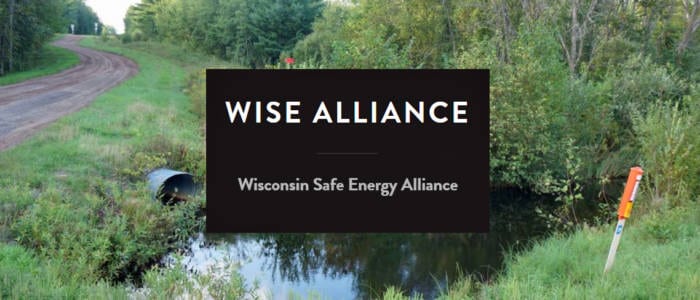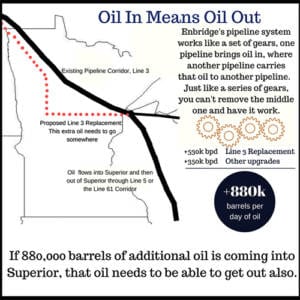By WiSE Alliance

Enbridge regularly puts out an Investor Presentation to let their current and potential investors know what they are planning and working on. For those trying to decipher what Enbridge’s plans are, it is also the best plan to learn what projects Enbridge sees in their future. In June, Enbridge released an update of the Investor Report.
Enbridge’s investor report in 2015 was the first place we learned details about Enbridge’s plan to build a Line 61-twin or Line 66. Information about the project continued to appear in their Investor’s Reports until March of this year, days before students held a March Against Pipelines and landowners were meeting to discuss ways they can protect themselves from unfair negotiations with Enbridge. Enbridge removed the slide from the presentation and claimed they were no longer planning to build the pipeline.
So that’s it? There’s no pipeline, right?
The Line 61-twin would be just the middle piece that helps connect the oil being brought into the United States to other pipelines that carry it south. The pipelines operate like part of a machine or series of gears. If you just take away one piece of the machine or one gear, you end up with too much oil in one place and the machine does not work. Enbridge’s system moves oil from Canada into Superior through Northern Minnesota. From there, the oil flows out of Superior through Line 5 and the Line 61 corridor – the pipelines then connect to other pipelines. If more oil comes into Superior, there needs to be another pipeline to carry that oil out of Superior. Therefore, we can look at Enbridge’s plans ‘upstream’ to figure out what will be needed ‘downstream’ of Superior.
Let’s do the math:
Slide 11 discusses the Line 3 Replacement. Though Enbridge calls it the ‘Line 3 Replacement’ and implies a simple replacement of the current pipeline, it will actually be a different, larger pipeline that will almost double the amount of oil the pipeline carries, starting at an annual capacity of 760,000 barrels per day (bpd). Enbridge has stated it plans to eventually have the pipeline run at an annual capacity of 915,000 bpd. That means an additional 535,000 bpd coming. Additionally, Slide 12 mentions a couple of other upgrades to existing pipelines that will lead to an additional 350,000 bpd of oil, totaling an additional 880k bpd coming into Superior.

What will happen to that oil? It can’t be left in Superior, that oil has to go somewhere. They may have deleted the slide that talks about the pipeline, but you can’t delete the basic arithmetic.
So when is it coming?
Right now, Enbridge is constructing Line 3 in Canada and Wisconsin but has a long permitting process in Minnesota. The slide that talks about Line 3 Replacement states a goal of having it online by 2019. They will need to have a pipeline that moves that oil out of Superior online by then as well. Just like you don’t install air conditioning not to use it, you don’t invest billions in system expansion if you don’t intend to use it.
The real question is:
If Enbridge is going to need to build another pipeline, why are they keeping landowners, County Boards, and the communities that are impacted in the dark? Why wouldn’t the landowners (that they refer to as family) be some of the first to know?
Reprinted with permission from the WiSE website.
